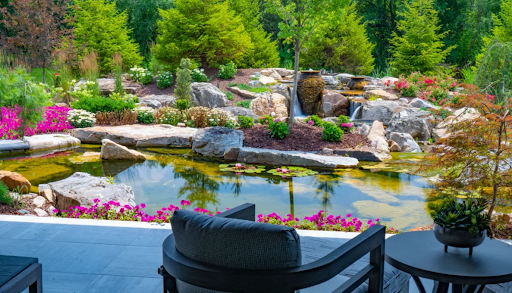Transforming Your Pool with a Cleaner Pond Solution
The Benefits of Fiberglassing for Pool Cleanliness
Fiberglassing provides a lasting, cleaner pond solution for your pool by offering significant improvements in durability and maintenance. This technique involves covering your pool’s surface with a fibreglass layer that makes it smooth, watertight, and resistant to the challenges that often cause pools to require frequent upkeep.
How Fibreglassing Enhances Your Pool’s Performance
Fibreglass offers one of the best solutions for cleaner pools. Its smooth surface helps keep the water free of contaminants and reduces the chances of algae or debris building up. This creates a self-sustaining ecosystem where cleaning becomes much less of a chore, allowing you to enjoy your pool with minimal effort.
Key Advantages of Fibreglass for Cleaner Ponds:
- Unmatched Durability
- Minimized Cleaning Requirements
- Sustainable Pool Maintenance
- Aesthetic Flexibility
- Eco-friendly Water Solutions
The Step-by-Step Guide to Fibreglassing a Pool
To make your pool a cleaner pond, fibreglassing involves a detailed process. Here’s how professionals typically apply it:
Step 1 – Pool Surface Preparation
The first step is draining and thoroughly cleaning the pool, removing any dirt, algae, or old surface coatings. Any imperfections, such as cracks or surface damage, are addressed during this stage.
Step 2 – Resin Application
A layer of fibreglass resin is applied to the surface, providing a strong bonding layer that helps ensure the fibreglass adheres properly to the pool.
Step 3 – Fibreglass Matting
Fibreglass matting is laid over the resin-coated surface, and more resin is applied to eliminate air bubbles, creating a smooth, even layer.
Step 4 – Curing Process
The resin is allowed to cure and harden, forming a durable, seamless surface. This process can take several hours depending on the specific materials used.
Step 5 – Final Gel Coat Finish
A final gel coat is applied to the fibreglass, providing a glossy, protective finish that further enhances the pool’s visual appeal while maintaining its strength and durability.
When is Fibreglassing the Right Choice for Your Pool?
Fibreglassing is ideal for situations where you want a cleaner pond and a more durable surface. Here’s when fibreglassing is recommended:
Cracked or Leaking Pools
If your pool has visible cracks or leaks, fibreglassing can seal these issues, providing a watertight finish that prevents further damage.
High Maintenance Pools
If you’re tired of frequent cleaning and repairs, fibreglassing provides a low-maintenance alternative, reducing the effort required to keep your pool in top condition.
Older Pool Renovations
Fibreglassing is a perfect solution for refurbishing old pools, giving them a modern look and longer lifespan.
Chemical Sensitivity
Fibreglassing offers protection against harsh chemicals in pool water, keeping the surface intact and extending the pool’s longevity.
Cost Considerations for Fibreglassing Your Pool
While the initial investment for fibreglassing may seem high, ranging from $5,000 to $15,000, it’s a cost-effective long-term solution. The reduced need for maintenance, fewer repairs, and extended lifespan make this an excellent value for pool owners.
Fibreglass vs. Traditional Pool Finishes
When comparing fibreglass to other materials, such as concrete and vinyl liners, fibreglass proves to be the superior option for achieving a cleaner pond experience:
Fibreglass vs. Concrete
- Durability: Fibreglass lasts longer than concrete with minimal repairs required.
- Smoothness: Fibreglass provides a smooth surface, while concrete can feel rough and may develop cracks over time.
Fibreglass vs. Vinyl Liners
- Longevity: Fibreglass outlasts vinyl liners, which require replacement every 5-10 years.
- Seamless Surface: Fibreglass eliminates seams, which are prone to leaks and require more frequent maintenance.
Maintenance Tips for Fibreglass Pools
Once your pool is fibreglassed, here are a few maintenance tips to ensure it stays a cleaner pond:
Regular Cleaning
Even with fibreglass, regular brushing and vacuuming of your pool will prevent debris from building up and keep it looking pristine.
Water Chemistry
Maintaining balanced water chemistry helps protect the fibreglass surface and ensures a healthier pool environment.
Periodic Inspections
Check the fibreglass surface periodically for any signs of wear or damage to ensure it remains in top condition.
Professional Maintenance
For optimal care, consider scheduling periodic professional inspections to address any potential issues before they become major problems.
Conclusion
Fiberglassing is the ultimate solution for creating a cleaner pond effect in your pool, ensuring long-term durability, easy maintenance, and aesthetically pleasing finishes. By opting for fibreglass, pool owners can enjoy years of clean water, fewer repairs, and an overall better swimming experience. Whether you’re installing a new pool or upgrading an old one, fiberglassing provides a seamless, low-maintenance solution that ensures a cleaner, more vibrant pool environment.
Clearing Up Confusion
1. What is swimming pool fibreglassing?
Fibreglassing involves applying a fibreglass resin layer to the interior of a pool to enhance durability, reduce leaks, and create a cleaner, smooth finish.
2. How long does a fibreglass pool last?
A well-maintained fibreglass pool can last over 20 years, making it a long-term investment in pool durability.
3. Can I fibreglass my pool myself?
While DIY kits are available, professional installation is recommended for best results and to ensure proper bonding and finishing.
4. How much does fibreglassing cost?
The cost typically ranges from $5,000 to $15,000, depending on your pool size, condition, and customization.
5. Is fibreglassing suitable for all pools?
Yes, fibreglassing is a versatile option for most pool types, including concrete, gunite, and older fibreglass pools.
Stay in touch to get more news & updates on Hamrosolarllc!






